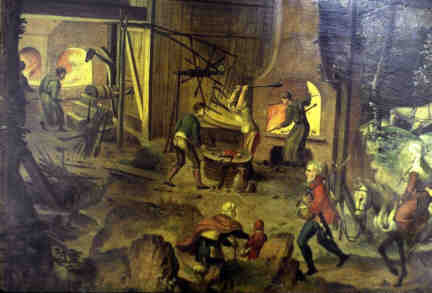In ancient times, technology was defined by Homer and Hesiod as the spoken word of manual craft or cunning skill (Luna, 1994). By 330 BC, Aristotle coined the Greek term technologia and split scientific knowledge into three parts: theoretical science, practical science, and productive science (technology).
According to Luna (1994), the earliest use of the word technology in the United States was found an a Harvard University course on the "application of the Sciences to the Useful Arts" in 1816. The 1832 Encyclopedia Americana defined technology as principles, processes, and nomenclatures. Ever since that time, there has been debate as to the definition and identity of technology.
From a historical perspective, philosophers of technology agree that two phases of technology can be seen: the craft phase and the modern scientized phase. However, to a philosopher of technology, modern technology, although scientized, is a unique structure of thinking, not merely applied science. Nor, is technology, like science, fully described by the laws of nature.
 |
Iron workers. Henry Met de Bles (Also known as: Il Civetta), Flemish, C.1480/1510-1550/55, Copyright Kathleen Cohen, tec01080 |
Wolf (1935) argued "that modern science was derived from technology through the wisdom accumulated via the 'technical arts,' and through the invention of a few critical instruments (e.g., the telescope, the microscope, the barometer, the air-pump, the pendulum clock.)" (Lewis & Gagel, 1992). In these terms, technology is defined as practical science--science as technique.
According to Bertrand Russell (1972, p. 492), practical science is not the same as "applied science." According to Russell, "applied science," as viewed by scientists, is inferior to "pure" or "theoretical science." Practical science or technology, as Russell viewed it, was not inferior science but was a conception of science as technique.
"Practical science...has been important from the first, and has continually increased in importance, until it has almost ousted theoretical science from men's thoughts...The triumph of science has been mainly due to its practical utility, and there has been an attempt to divorce this aspect from that of theory, thus making science more a technique, and less and less a doctrine as to the nature of the world....science as technique was building up in practical men a quite different outlook from any that was to be found among theoretical philosophers. Technique confers a sense of power: man is much less at the mercy of his environment than he was in former times."
The history of technology is long and complex. In fact, as discussed in unit 1, there is a fundamental disagreement about what is technology. Was the discovery of fire the first technology? Or, was the wheel or the plow the first technology? In contrast to other units, in this unit we will focus on specific examples in the history of technology.
Of course, inter-dispersed with the examples, there will be a discussion of the historical significance of these technologies in the time they were invented. Also, we will discuss the effect of these technologies on subsequent developments in history, technology, and science. As discussed in unit 1, The Nature of Science and Technology, modern science developed almost solely out of Western Europe. Technology, however, has a more eclectic past.
It is this eclectic past that we will explore in this unit. Our travels through technology will not be comprehensive; instead, we will focus on three specific topics: Technology in the Middle Ages, Chinese Contributions to Technology, and Islam Spain and the History of Technology. These topics were chosen to build upon our discussion of the nature of technology in Unit 1 and to provide a context for our future discussion of technology beginning at the Industrial Revolution in Unit 3 (Technology and Work). It is hoped that when you move to Unit 3 you will better understand the complex nature of technological development and diffusion.
To return to the main menu, you can click here. Or you can go immediately to one of the three sections in this unit.